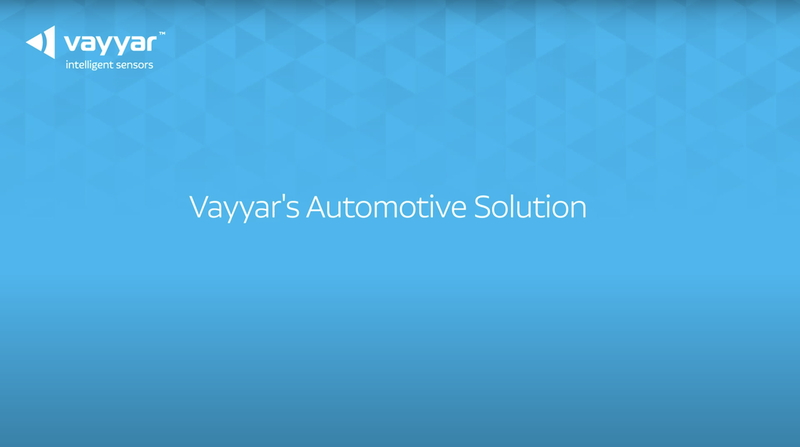THOUGHT LEADERSHIP
Sponsored by Vayyar
The XRR-Factor: smoothing the road from ADAS to full autonomy with a single multi-range chip
Subtitle
An emergency drill onboard AIDAsol cruise ship in 2019. Image: MikhailBerkut / Shutterstock.com
Full autonomy
Today’s hardware-defined cars are rapidly transforming into software-defined transportation platforms.
While the world eagerly awaits the arrival of self-driving cars, the reality is that the vast majority of ADAS-equipped vehicles today are only at autonomy level 2 – partial automation - of the five levels defined by the Society of Automotive Engineers. Just a handful of high-end models currently provide level 3 functionality: conditional automation with the driver having to respond to a “request to intervene.”
Some experts point to a roadblock in autonomous vehicle (AV) development, partly due to challenges across the hardware, software, algorithm and data domains, but also to the “irony of automation.”
It’s a paradox that must be confronted: the fact that a semi-automated system requiring human supervision will naturally hold the attention of the driver, while a more autonomous system will ultimately result in them losing focus. In the event of a sudden emergency that requires human action, the driver may be unable to react in time and safely resolve the situation. Road safety can no longer rely on human supervision.
Both in the here and now and as ADAS morphs into full level 5 autonomy, sensor ecosystems need to be completely foolproof. That’s why the industry is focused on systems based on sensor fusion - multiple technologies that ensure failsafe functionality and the highest level of protection. Sensor fusion enables hardware and process redundancy, ensuring that technology will effectively be the line of defense.
The core challenge for the industry is striking the right balance between redundancy-driven reliability and cost-efficiency. To reach the goal of scalable, affordable and dependable level 5 autonomy under all roadway and environmental conditions, the industry is trending away from legacy solutions such as TOF radar. This type of radar provides suboptimal resolution that cannot support classification of multiple static and dynamic targets. It also covers only a narrow field of view, with no upward or downward detection capabilities.
Instead, many automakers are considering systems based on imaging radar, LIDAR, or a combination of telescopic cameras and computer vision. These leading-edge technologies provide high-resolution real-time sensing of the on-road environment, even at high speeds, but not in all challenging scenarios.
Cameras can deliver impressive resolution but lack depth of field, and inevitably struggle to perform in direct sunlight, darkness, and adverse weather conditions. They are also prohibitively expensive, putting them out of reach of mid-market and budget models. LIDAR performs well in darkness and offers depth but struggles in severe weather and is ultra-expensive.
Imaging radar, on the other hand, provides 4D imaging with high-resolution point cloud data in all conditions. It is unaffected by glare, darkness, and the worst weather, and provides full depth perception. However, single-chip imaging radar solutions are hampered by poor performance due to their low antenna count.
Higher resolution imaging radar solutions are built around multiple concatenated radar chips combined with an expensive FPGA, all contributing to large, unwieldy form factors and a steep price tag. Affordability is crucial to the purpose of ADAS – protecting every life on the road. If effective driver assistance is seen only as a luxury, it defeats the object.
What automakers need is the ideal best price-performance balance. With the launch of Vayyar’s multi-range “XRR” RFIC, cost-efficient and high-performance 4D imaging radar is now available on a single chip. The XRR chip covers a range from 0-300m, with all required processing power embedded on the RFIC. While alternative solutions require multiple sensors to cover various ranges, the multi-range chip simultaneously supports accurate detection and tracking over Short Range Radar (SRR) Mid Range Radar (MRR) as well as Long Range Radar (LRR).
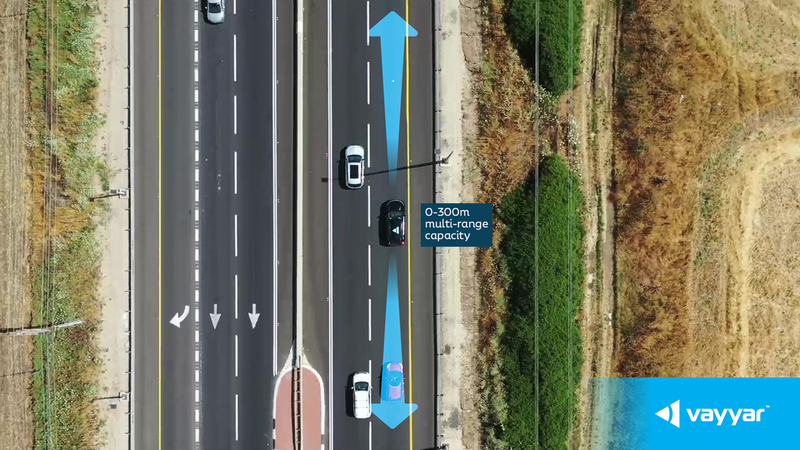
It’s the most comprehensive, cost-effective ADAS solution on the market, designed for passenger-vehicle ADAS, motorcycle-mounted ARAS and autonomous vehicles. The ASIL-B compliant XRR chip supports dozens of Euro NCAP-mandated safety features for ADAS and autonomy, ensuring robust performance in all conditions - even in heavy traffic, glare, darkness, or fog.
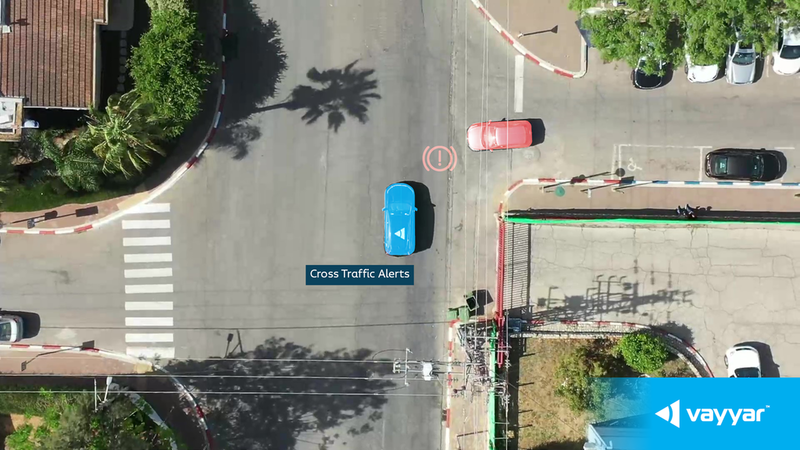
In low-speed environments such as parking lots, the chip’s SRR sensing supports advanced parking assistance, scanning the vehicle’s surroundings for pedestrians and hazards. On the open road, MRR and LRR capabilities facilitate a variety of ADAS and autonomy applications such as Lane Change Assist (LCA), Adaptive Cruise Control (ACC), Blind Spot Detection (BSD), Collision Warnings (fCW/rCW), Cross Traffic Alerting (CTA) and Autonomous Emergency Braking (AEB).
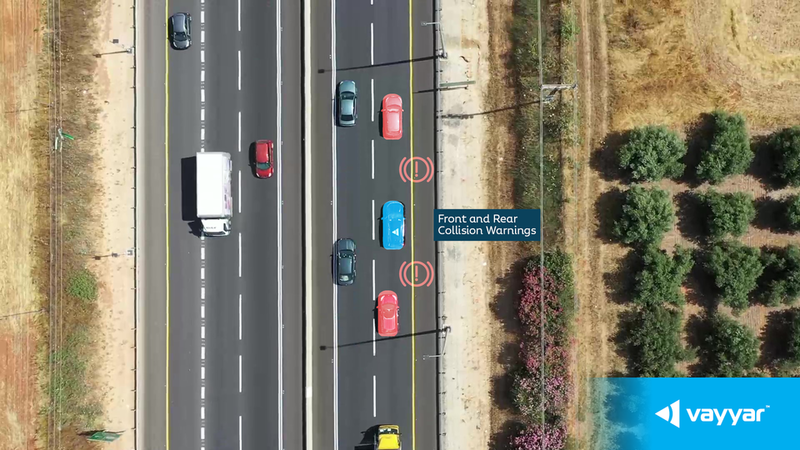
The XRR chip features an ultra-wide field of view including elevation at shorter ranges and unrivaled breadth at longer ranges. Just two single-chip based systems provide vehicles 360-degree coverage, identifying and tracking multiple targets in real time, anywhere around the vehicle. With panoramic perception of the entire arena, the chip can differentiate between static obstacles such as dividers, curbs, and parked vehicles, and between different types of VRUs, moving vehicles and other hazards.
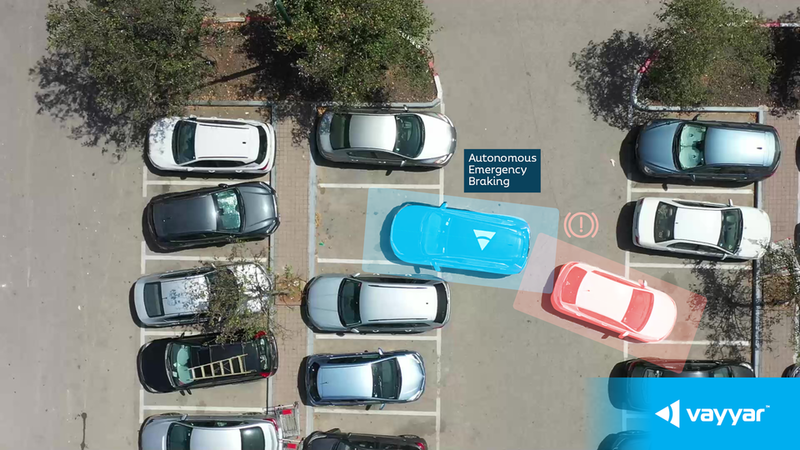
Providing data output in the form of a high-resolution point cloud, the highly integrated XRR chip ensures pinpoint precision without the need to deal with low-level radar algorithms, allowing Vayyar’s partners to easily develop solutions over point cloud. Supported by a 48-antenna MIMO array, the single-chip solution achieves granularity that alternatives require numerous chips to achieve. With the global semiconductor shortage now expected to extend into 2023 and beyond, saving on silicon is a crucial aspect of automotive development.
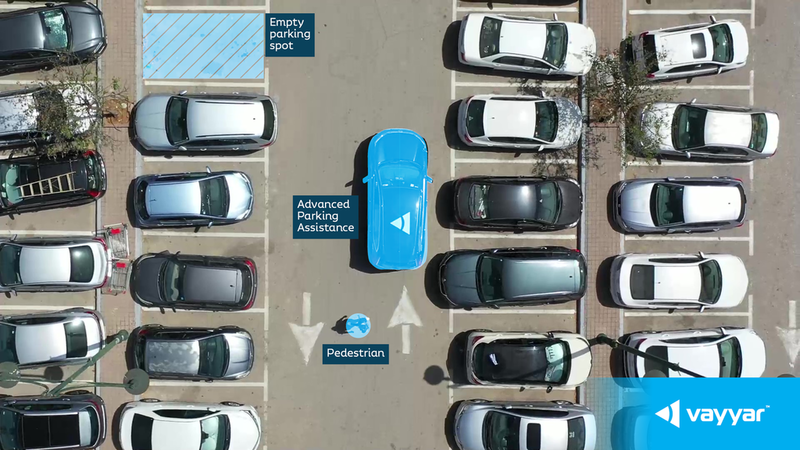
With unique multifunctionality on a single-chip platform, just one XRR chip at the front of the vehicle and one in the back enable any vehicle to earn up to 33 Euro NCAP safety points at the lowest possible cost. The solution addresses nine ADAS requirements for 2023 onward, protecting drivers, passengers, pedestrians, cyclists, scooter users and motorcyclists. By replacing over ten traditional ADAS sensors, the XRR chip allows automakers to cut complexity, risk, and costs by significantly reducing hardware, software, power consumption, wiring and integration efforts.
In addition to leading the in-cabin monitoring domain with its 60 GHz 4D imaging RFIC which provides CPD, SBR and a future-ready platform, Vayyar’s single-chip 4D imaging radar now represents another breakthrough that’s finally enabling the industry to turn the corner on safety. As automakers intensify their efforts to protect both vehicle occupants and Vulnerable Road Users (VRUs), the multi-range, XRR chip makes high-resolution, cost-effective 4D imaging radar available to all vehicles. That’s why it’s emerging as the failsafe technology of choice for the next generation of ADAS, ARAS and AV systems. To learn more, click here.
Ben Bouldin is Royal Caribbean’s vice president sales for Europe Middle East and Africa. Image: Royal Caribbean
Ben Bouldin is Royal Caribbean’s vice president sales for Europe Middle East and Africa. Image: Royal Caribbean
Muster 2.0 removes friction on board
When looking at the new Muster 2.0 drill process in the context of Royal Caribbean’s digital transformation, it is a natural development for a company striving to reduce passenger friction on board.
“The innovative programme is the first of its kind and reimagines a process originally designed for larger groups of people into a faster, more personal approach that encourages higher levels of safety,” says Royal Caribbean’s vice president of sales Ben Bouldin for Europe Middle East and Africa.
The safety drill has always put a pause on the cruise experience
Over the last few years reducing friction has been the focus of Royal Caribbean’s digital department and the goal of the Royal app, which, among other features, allows guests to avoid queues by finding out information and booking dinner tables, activities, excursions and shows online.
In 2018, at the launch of Symphony of the Seas, Royal Caribbean’s senior vice president of digital Jay Schneider explained to Future Cruise that building guest products that “get people out of lines and let people enjoy their vacation first and foremost” has been one of his main missions.
Recently he said that: “Muster 2.0 represents a natural extension of our mission to improve our guests’ vacation experiences by removing points of friction.”
Ben Bouldin is Royal Caribbean’s vice president sales for Europe Middle East and Africa. Image: Royal Caribbean
Schneider and Nick Weir, the senior vice president of entertainment at Royal Caribbean were instrumental to the development of Muster 2.0. Weir is behind some of the most original and innovative entertainment experiences guests can have at sea and has successfully mixed and transitioned formats and blended technology into traditional structures, such as turning an on-board ice rink into laser tag, back again into an ice show with synchronised drones and moving image effects such as those that transform the ice into an emotive Arctic whale scene.
“The safety drill has always put a pause on the cruise experience, and I felt like it could be more efficient,” explains Nick. When he was a cruise director he explains how he was responsible for the welcome party as well as drill announcements which always brought a halt to the fun as guests were starting to enjoy themselves.
“I happened to be outside on one hot, sweaty day during the drill, and I thought why not put it all on a device so it can be done individually and monitored? Technology naturally played a big part, location services on smartphones is essential, and a big team at Royal Caribbean came together to make it happen.”
Muster 2.0 removes friction on board
When looking at the new Muster 2.0 drill process in the context of Royal Caribbean’s digital transformation, it is a natural development for a company striving to reduce passenger friction on board.
“The innovative programme is the first of its kind and reimagines a process originally designed for larger groups of people into a faster, more personal approach that encourages higher levels of safety,” says Royal Caribbean’s vice president of sales Ben Bouldin for Europe Middle East and Africa.
The safety drill has always put a pause on the cruise experience
Over the last few years reducing friction has been the focus of Royal Caribbean’s digital department and the goal of the Royal app, which, among other features, allows guests to avoid queues by finding out information and booking dinner tables, activities, excursions and shows online.
In 2018, at the launch of Symphony of the Seas, Royal Caribbean’s senior vice president of digital Jay Schneider explained to Future Cruise that building guest products that “get people out of lines and let people enjoy their vacation first and foremost” has been one of his main missions.
Recently he said that: “Muster 2.0 represents a natural extension of our mission to improve our guests’ vacation experiences by removing points of friction.”
Ben Bouldin is Royal Caribbean’s vice president sales for Europe Middle East and Africa. Image: Royal Caribbean
Schneider and Nick Weir, the senior vice president of entertainment at Royal Caribbean were instrumental to the development of Muster 2.0. Weir is behind some of the most original and innovative entertainment experiences guests can have at sea and has successfully mixed and transitioned formats and blended technology into traditional structures, such as turning an on-board ice rink into laser tag, back again into an ice show with synchronised drones and moving image effects such as those that transform the ice into an emotive Arctic whale scene.
“The safety drill has always put a pause on the cruise experience, and I felt like it could be more efficient,” explains Nick. When he was a cruise director he explains how he was responsible for the welcome party as well as drill announcements which always brought a halt to the fun as guests were starting to enjoy themselves.
“I happened to be outside on one hot, sweaty day during the drill, and I thought why not put it all on a device so it can be done individually and monitored? Technology naturally played a big part, location services on smartphones is essential, and a big team at Royal Caribbean came together to make it happen.”
